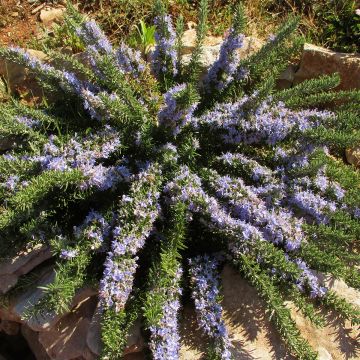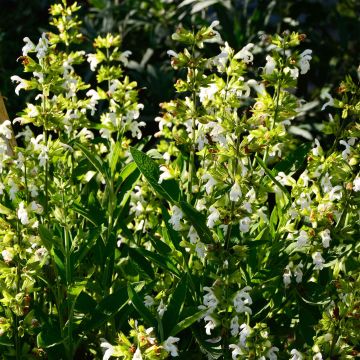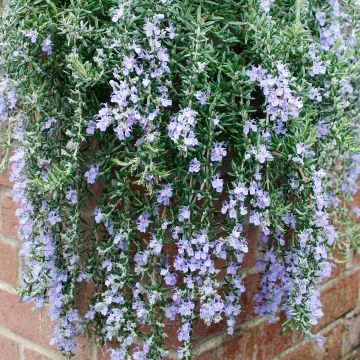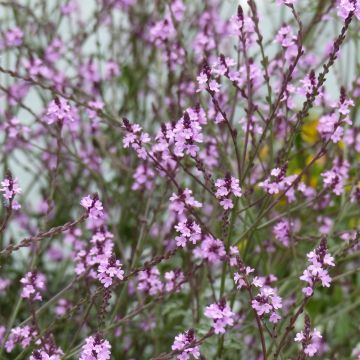

Cumin des prés - Carvi
Organic Caraway - Carum carvi
Carum carvi
Caraway, Meridian fennel, Persian cumin
This item cannot be shipped to the selected country
Delivery charge from €5.90
More information
Schedule delivery date,
and select date in basket
This plant carries a 6 months recovery warranty
More information
We guarantee the quality of our plants for a full growing cycle, and will replace at our expense any plant that fails to recover under normal climatic and planting conditions.
From €5.90 for pickup delivery and €6.90 for home delivery
Express home delivery from €8.90.

Description
Persian cumin, also known as caraway, is a biennial aromatic plant cultivated for its leaves and seeds, with a lemony and aniseed taste. Different from cumin, caraway is used to flavour meats, cheeses, and pastries. Plant it from May to September and harvest the seeds the following summer.
Persian cumin belongs to the Apiaceae family (formerly Umbelliferae), like fennel and dill. It is one of the oldest spices. There is sometimes confusion between caraway and cumin, but they are two different species, particularly in terms of their native climate (hot countries for cumin) and taste (less pronounced and more aniseed for caraway).
Caraway is a herbaceous plant that grows 50 to 75cm (20 to 30in) tall, with slender and channelled stems, highly divided foliage, and taproots. In the second year, small white flowers gathered in umbels appear in summer. The resulting fruits contain aromatic, slightly curved seeds.
In terms of cooking, whole or crushed seeds are used to flavour meats, cheeses (Munster, gouda), sauerkraut, pastries, or certain alcohols (gin, schnapps, kummel). The leaves add flavour to salads or soups. Less commonly used, caraway root is also edible and can be consumed like carrots and parsnips. Persian cumin is reputed to aid digestion.
Harvesting: Harvest the leaves from the first year as needed. Harvest the seeds in the second year, in summer, as soon as they start to turn brown. Cut the stems and dry them in a well-ventilated and dry place. Harvest all the seeds to prevent spontaneous sowing.
Storage: Once dried, the seeds can be stored for a few years in airtight containers, kept away from light and moisture. The leaves should be consumed promptly after harvesting.
The gardener's tip: We recommend mulching the soil with thin successive layers of grass clippings, if possible mixed with dead leaves. This protection, which helps keep the soil moist, also reduces weeding.
Report an error about the product description
Organic Caraway - Carum carvi in pictures


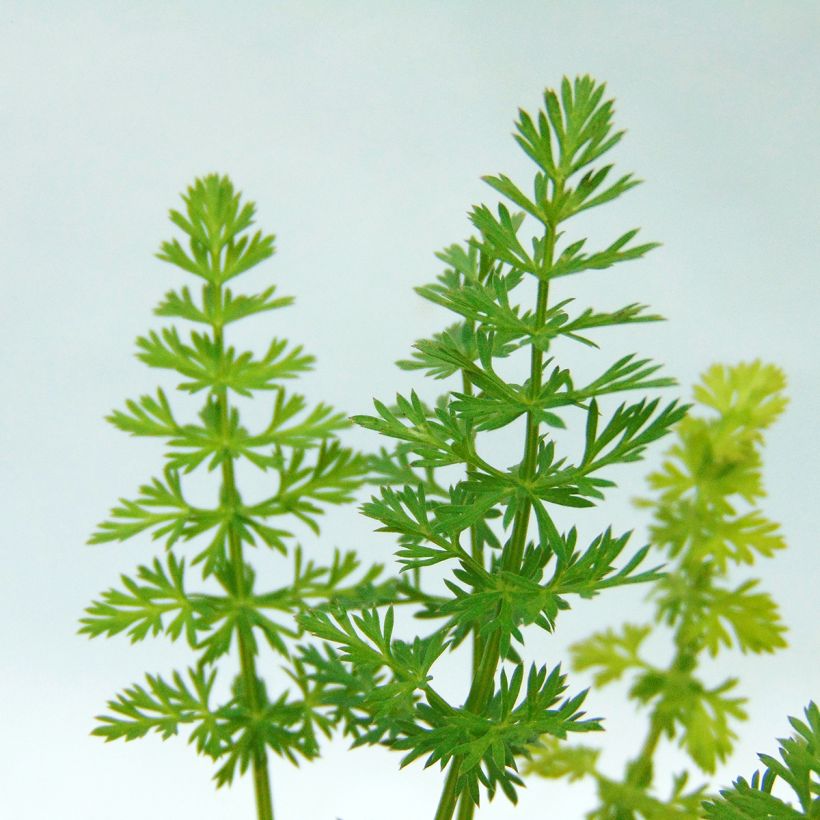

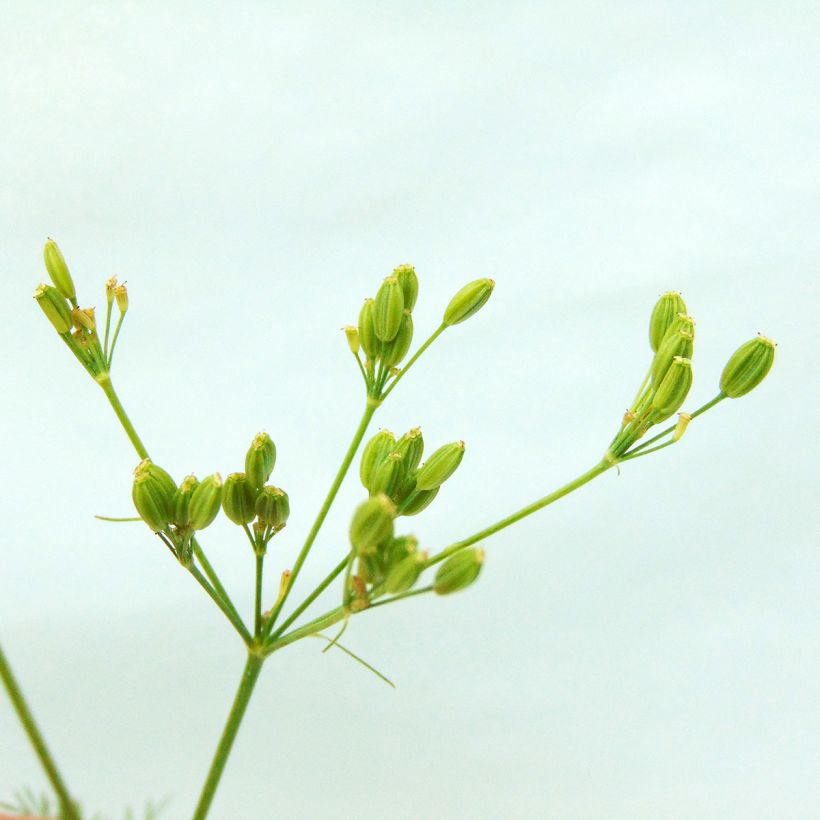

Harvest
Plant habit
Foliage
Other Herbs A to Z
Planting and care
Persian cumin thrives in rich, light, and well-drained soils. Choose a sunny exposure. In the vegetable garden, it appreciates the proximity of peas. It is a very hardy plant, down to -15°C: it can be planted both in the ground and in pots. Planting can be done from May to September.
In the ground :
Add compost during the previous autumn by incorporating it to a depth of 5 cm (2in) after loosening the soil. The plants will be spaced 30cm (12in) apart in all directions. Dig a hole (3 times the volume of the root ball), place the root ball in the hole and cover it with fine soil. Water to keep the soil moist.
In a pot : take a pot and place a layer of gravel at the bottom to facilitate drainage. Fill it with a mixture of compost, sand, and soil. Place the root ball and cover with soil, firming it down well. Water to keep the soil moist. Place your pot in a sunny spot.
Cultivation
Care
Intended location
-
, onOrder confirmed
Reply from on Promesse de fleurs
Herbs
Haven't found what you were looking for?
Hardiness is the lowest winter temperature a plant can endure without suffering serious damage or even dying. However, hardiness is affected by location (a sheltered area, such as a patio), protection (winter cover) and soil type (hardiness is improved by well-drained soil).

Photo Sharing Terms & Conditions
In order to encourage gardeners to interact and share their experiences, Promesse de fleurs offers various media enabling content to be uploaded onto its Site - in particular via the ‘Photo sharing’ module.
The User agrees to refrain from:
- Posting any content that is illegal, prejudicial, insulting, racist, inciteful to hatred, revisionist, contrary to public decency, that infringes on privacy or on the privacy rights of third parties, in particular the publicity rights of persons and goods, intellectual property rights, or the right to privacy.
- Submitting content on behalf of a third party;
- Impersonate the identity of a third party and/or publish any personal information about a third party;
In general, the User undertakes to refrain from any unethical behaviour.
All Content (in particular text, comments, files, images, photos, videos, creative works, etc.), which may be subject to property or intellectual property rights, image or other private rights, shall remain the property of the User, subject to the limited rights granted by the terms of the licence granted by Promesse de fleurs as stated below. Users are at liberty to publish or not to publish such Content on the Site, notably via the ‘Photo Sharing’ facility, and accept that this Content shall be made public and freely accessible, notably on the Internet.
Users further acknowledge, undertake to have ,and guarantee that they hold all necessary rights and permissions to publish such material on the Site, in particular with regard to the legislation in force pertaining to any privacy, property, intellectual property, image, or contractual rights, or rights of any other nature. By publishing such Content on the Site, Users acknowledge accepting full liability as publishers of the Content within the meaning of the law, and grant Promesse de fleurs, free of charge, an inclusive, worldwide licence for the said Content for the entire duration of its publication, including all reproduction, representation, up/downloading, displaying, performing, transmission, and storage rights.
Users also grant permission for their name to be linked to the Content and accept that this link may not always be made available.
By engaging in posting material, Users consent to their Content becoming automatically accessible on the Internet, in particular on other sites and/or blogs and/or web pages of the Promesse de fleurs site, including in particular social pages and the Promesse de fleurs catalogue.
Users may secure the removal of entrusted content free of charge by issuing a simple request via our contact form.
The flowering period indicated on our website applies to countries and regions located in USDA zone 8 (France, the United Kingdom, Ireland, the Netherlands, etc.)
It will vary according to where you live:
- In zones 9 to 10 (Italy, Spain, Greece, etc.), flowering will occur about 2 to 4 weeks earlier.
- In zones 6 to 7 (Germany, Poland, Slovenia, and lower mountainous regions), flowering will be delayed by 2 to 3 weeks.
- In zone 5 (Central Europe, Scandinavia), blooming will be delayed by 3 to 5 weeks.
In temperate climates, pruning of spring-flowering shrubs (forsythia, spireas, etc.) should be done just after flowering.
Pruning of summer-flowering shrubs (Indian Lilac, Perovskia, etc.) can be done in winter or spring.
In cold regions as well as with frost-sensitive plants, avoid pruning too early when severe frosts may still occur.
The planting period indicated on our website applies to countries and regions located in USDA zone 8 (France, United Kingdom, Ireland, Netherlands).
It will vary according to where you live:
- In Mediterranean zones (Marseille, Madrid, Milan, etc.), autumn and winter are the best planting periods.
- In continental zones (Strasbourg, Munich, Vienna, etc.), delay planting by 2 to 3 weeks in spring and bring it forward by 2 to 4 weeks in autumn.
- In mountainous regions (the Alps, Pyrenees, Carpathians, etc.), it is best to plant in late spring (May-June) or late summer (August-September).
The harvesting period indicated on our website applies to countries and regions in USDA zone 8 (France, England, Ireland, the Netherlands).
In colder areas (Scandinavia, Poland, Austria...) fruit and vegetable harvests are likely to be delayed by 3-4 weeks.
In warmer areas (Italy, Spain, Greece, etc.), harvesting will probably take place earlier, depending on weather conditions.
The sowing periods indicated on our website apply to countries and regions within USDA Zone 8 (France, UK, Ireland, Netherlands).
In colder areas (Scandinavia, Poland, Austria...), delay any outdoor sowing by 3-4 weeks, or sow under glass.
In warmer climes (Italy, Spain, Greece, etc.), bring outdoor sowing forward by a few weeks.

































